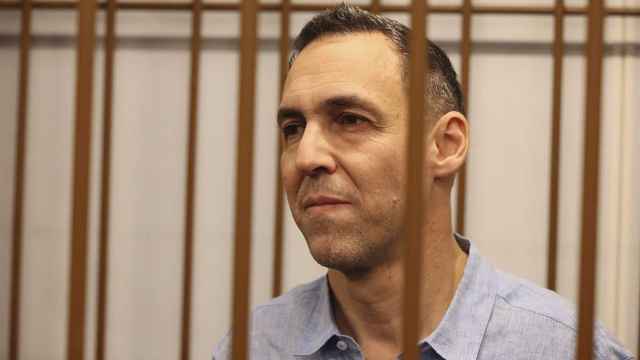
Felix Kugel
Vice-president & Managing Director
ManpowerGroup Russia & CIS
The companies that need to acquire new talent to grow will be the ones that learn when it's best to buy talent and when it's more effective to build it. And the answers may not be as obvious as they seem.
Determining the most effective talent acquisition strategy — in this case, whether to build or to buy — typically begins with a look at a series of fundamental questions related to an employer's needs, structure, resources and expectations for the future. The answers will shed light on the path forward. For example:
Do we have the budget, resources and culture to support a training environment?
Recruiting the right talent and providing opportunities for continued growth is a key to long-term success and strategic succession planning, but not every organization can support a learning culture. Focused professional development requires commitment from the top levels of the organization as well as resources that not only understand the business imperative, but have bandwidth and expertise to manage the content, instruction design and delivery to ensure training aligns with business goals. While talent development is crucial in every organization, embracing it as a talent acquisition and management strategy requires a long-term vision and investment.
Are there potential partners in the educational or government community who might have an interest in partnership?
Partnering with educational or government institutions can not only help organizations solve the talent gap, but increase employment opportunities for those who currently do not have the skills required for career progression. Working with universities to design curriculum that supports in-demand skill development can help organizations meet recruiting goals as well as strengthen performance and retention. Investing in training and building capabilities ensures individuals are prepared to excel.
Is leadership committed to operating in an environment where talent is built as a long-term strategy?
Successful companies understand the benefit of intellectual enrichment and invest in training and development of their talent. This commitment needs to extend down through the ranks whether that is implementing mobility programs to expose employees to different functions and job roles or coaching managers about how to develop and reward team members for contributions that drive organizational change.
Do we have time to invest or is our need immediate?
Nearly all organizations have a mix of immediate and longer-term talent needs that can be satisfied through staff development. The key is having an accurate, up-to-date inventory of both sets for informed decision-making. If skills exist in adequate numbers in the market or the need is immediate, a buy versus build approach may be the most expedient and effective solution. But, skills and job types are continually evolving in the workplace. Ten years ago most organizations didn't employ a community manager, but with social networking now ubiquitous, more organizations are hiring for that role. Organizations with a small social presence may want to cultivate that talent and train for teachable fit rather than invest in buying it today.
Do we need a short and long-term strategy?
Some roles and skill gaps create a serious disadvantage when left unfilled. Skills such as analytical ability may play an important role today, but will be increasingly critical in the future. As a greater number of jobs require proficiency in translating vast amounts of data and data-based reasoning skills, organizations will need more individuals with those capabilities. Acquiring talent with necessary skills and establishing formal mentor relationships and career paths can support a teachable fit strategy and help meet current and future goals. A blended approach that ties business strategy to resources, budget and need can help organizations build bench strength and increase agility to respond to changing requirements.
Do we have the right processes to ensure alignment between talent acquisition, development processes and business goals?
Hiring only the exactly-qualified talent you need at precisely the times you need it is a very expensive way to run any organization. Most enterprises find their sweet spot for human capital lies in a mix of hiring experienced and/or specialized talent; hiring less experienced employees and providing a development path; and ensuring at all times that both pools of workers are the right fit for current and anticipated business goals. Having separate systems for tracking those goals and processes can slow down competitive flexibility and lead to serious misalignment between available human capital and the organization's needs. What's needed is an integrated solution that tracks business goals alongside projected needs, employee development, and the availability of new talent.
Do we have sufficient recruiting resources?
While the size of the talent pool remains the same, high unemployment typically translates to a higher number of applicants for every open position. With smaller HR departments and fewer resources, keeping up with volume to source and screen for qualified candidates is time consuming and prevents HR from more strategic work such as change management and workforce strategy development. In many cases, an external partner has the insight into available talent pools as well as the resources, experience and expertise to help organizations determine the right strategy, whether that is to source for specific talent or identify candidates with comparable skills and experience and provide training and development to build a competitive workforce that aligns with business requirements. This is consistent with the aforementioned "Recruiting Strategy" research report in which hiring managers cited the three main reasons for outsourcing recruitment processes as: 1) improving time-to-fill, 2) improving process efficiency, and 3) attracting hard-to-find skills.
Finally, I would like to add that it would be misleading to suggest that developing an effective talent acquisition strategy is easy. It takes time and expertise as it relates to economic context, industry trends and market dynamics. Often times, this means bringing in the right partners to help recruit high-quality talent — whether that talent is built or bought. Globally, there is no sign the talent shortage is going to ease up, and the time to figure out the path forward is now.
A Message from The Moscow Times:
Dear readers,
We are facing unprecedented challenges. Russia's Prosecutor General's Office has designated The Moscow Times as an "undesirable" organization, criminalizing our work and putting our staff at risk of prosecution. This follows our earlier unjust labeling as a "foreign agent."
These actions are direct attempts to silence independent journalism in Russia. The authorities claim our work "discredits the decisions of the Russian leadership." We see things differently: we strive to provide accurate, unbiased reporting on Russia.
We, the journalists of The Moscow Times, refuse to be silenced. But to continue our work, we need your help.
Your support, no matter how small, makes a world of difference. If you can, please support us monthly starting from just $2. It's quick to set up, and every contribution makes a significant impact.
By supporting The Moscow Times, you're defending open, independent journalism in the face of repression. Thank you for standing with us.
Remind me later.





